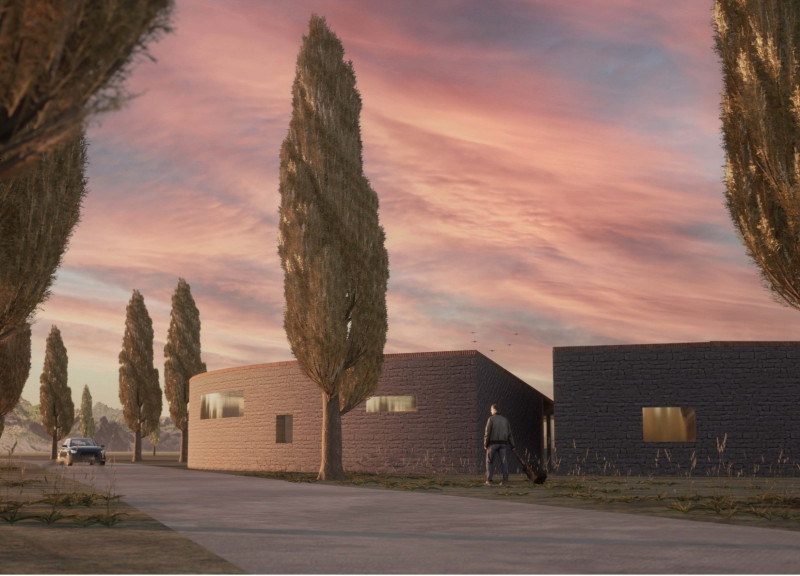5 key facts about this project
The design is located in a beautiful area surrounded by vineyards and mountains. It features different spaces, including a cortile, kitchen, wine cellar, fire pit, and five guest rooms. The overall concept highlights a connection between indoor and outdoor areas, focusing on sustainability and efficient use of resources.
Building Organization
The layout encourages easy movement throughout the structure while providing areas for privacy. Each guest room is intentionally placed to offer views of the landscape, enhancing the experience for the occupants. The arrangement skillfully balances shared and private spaces, allowing for social interaction and quiet moments.
Materiality and Sustainability
A central theme of the design is the use of reclaimed and reused materials. It includes new tiles, reinforced concrete beams, and used stone bricks. Salvaged materials from the previous building reduce waste and maintain a link to the site’s history, promoting an environmentally friendly approach to construction.
Circulation Ring Concept
An important aspect of the design is the circulation ring. It reflects the eco-cycle idea that resonates with the values of the Tili winery. This circular layout facilitates smooth movement between spaces while connecting the interior to the exterior environment. Additionally, the use of recycled materials, like cork for insulation, supports sustainable practices throughout the design.
Geographical Influence on Design
The flat terrain surrounded by mountains shapes the form of the building. This geography leads to a circular design that captures views from multiple angles. The careful positioning allows occupants to enjoy expansive views of the landscape.
The glass curtain wall is a key feature, creating a transition between inside and outside. It fills the interior with light and invites the surrounding environment in, making the experience of space both bright and connected to nature. The approach to design reflects a commitment to functionality while honoring the ecological character of the site.






















































